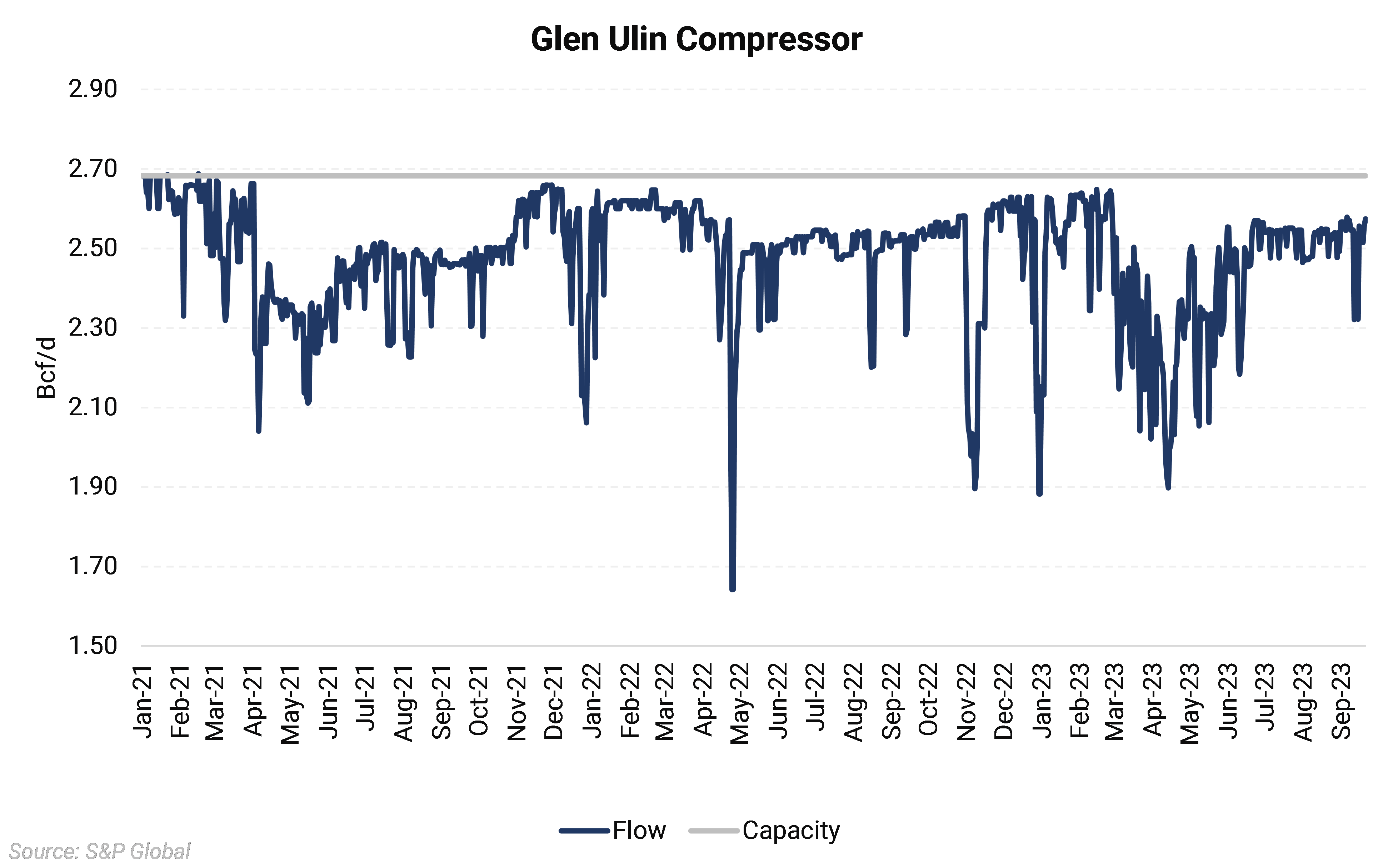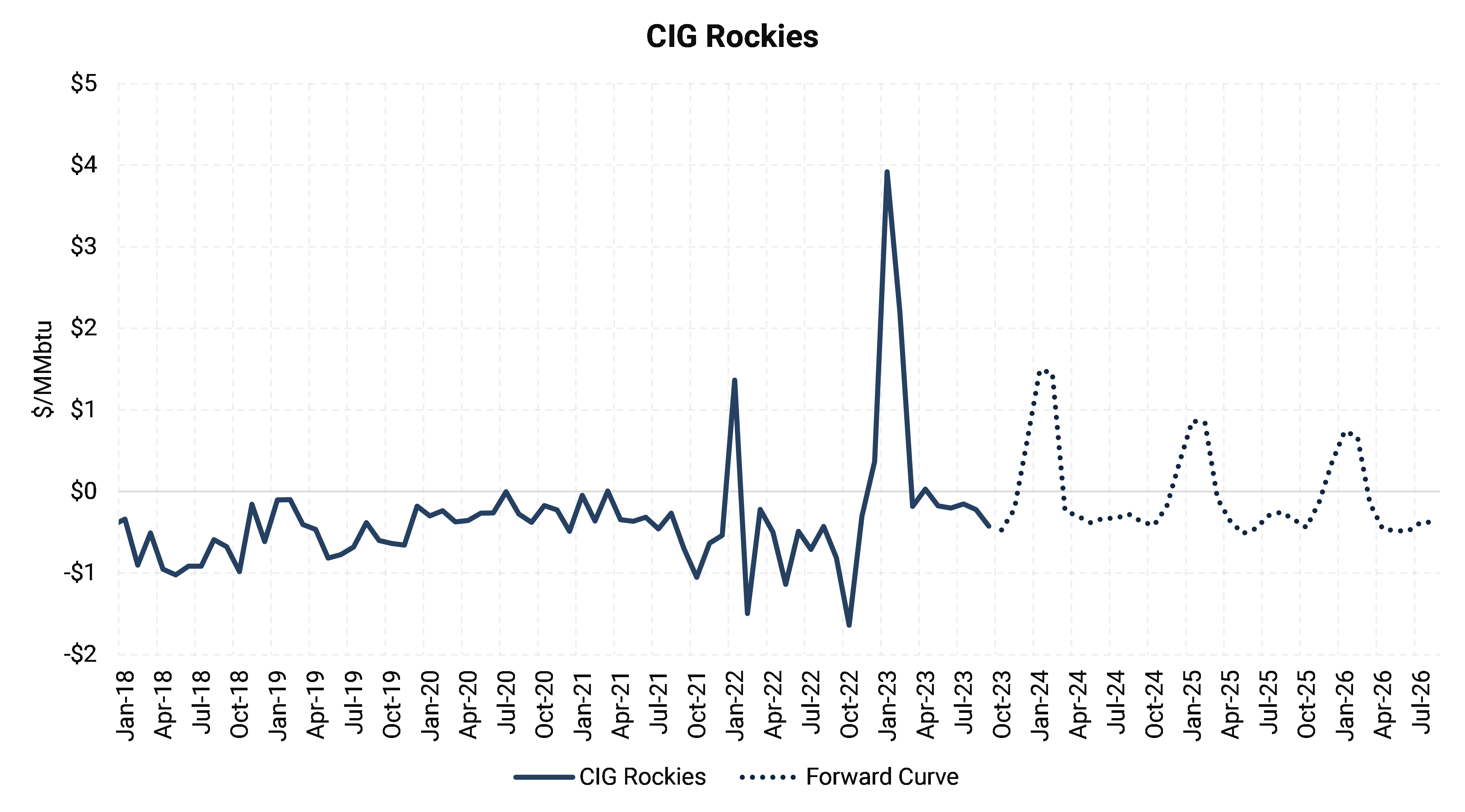The Northern Border Pipeline extends from the US-Canadian border in Montana through the Dakotas and into the Midwest. As output from the Bakken has grown over the past several years, some pipe sections have reached their maximum capacity, specifically the sections past the Glen Ulin compressor station. This is set to change with increased compression, allowing an additional 430 MMcf/d to exit the basin onto the Bison pipeline and towards the Rockies.

The map above shows the Northern Border Pipeline in red, Bison Pipeline in Green, TC Foothills in Yellow, and the associated compressor stations.
The expansions will occur at the three labeled compressor stations, with old units being replaced or additional units being added. The most important expansion will be at the Glen Ulin compressor, which generally flows close to its maximum capacity and is the interconnect with the Bison pipeline.

The Bison Pipeline, unused since 2015, is another integral part of the expansion. The pipeline will make minor facility upgrades to allow up to 430 MMcf/d of gas from Northern Border to be delivered south into Wyoming. The Bison Pipeline interconnects with the intrastate Fort Union Gas Pipeline at Bison’s southern terminus. The Fort Union pipeline then feeds into the Wyoming Interstate Pipeline, which connects to Colorado Interstate Gas and the Cheyenne Hub.

Using CIG Rockies basis as a proxy for gas prices in the Wyoming/Colorado area, the forward curve is elevated relative to where prices have historically settled. The expansion is expected to arrive in the first quarter of 2026. The first quarter of 2026 is currently averaging a $0.42/MMbtu premium to Henry Hub. The increased supply into Wyoming and Colorado could pressure prices lower in this part of the curve in the future.